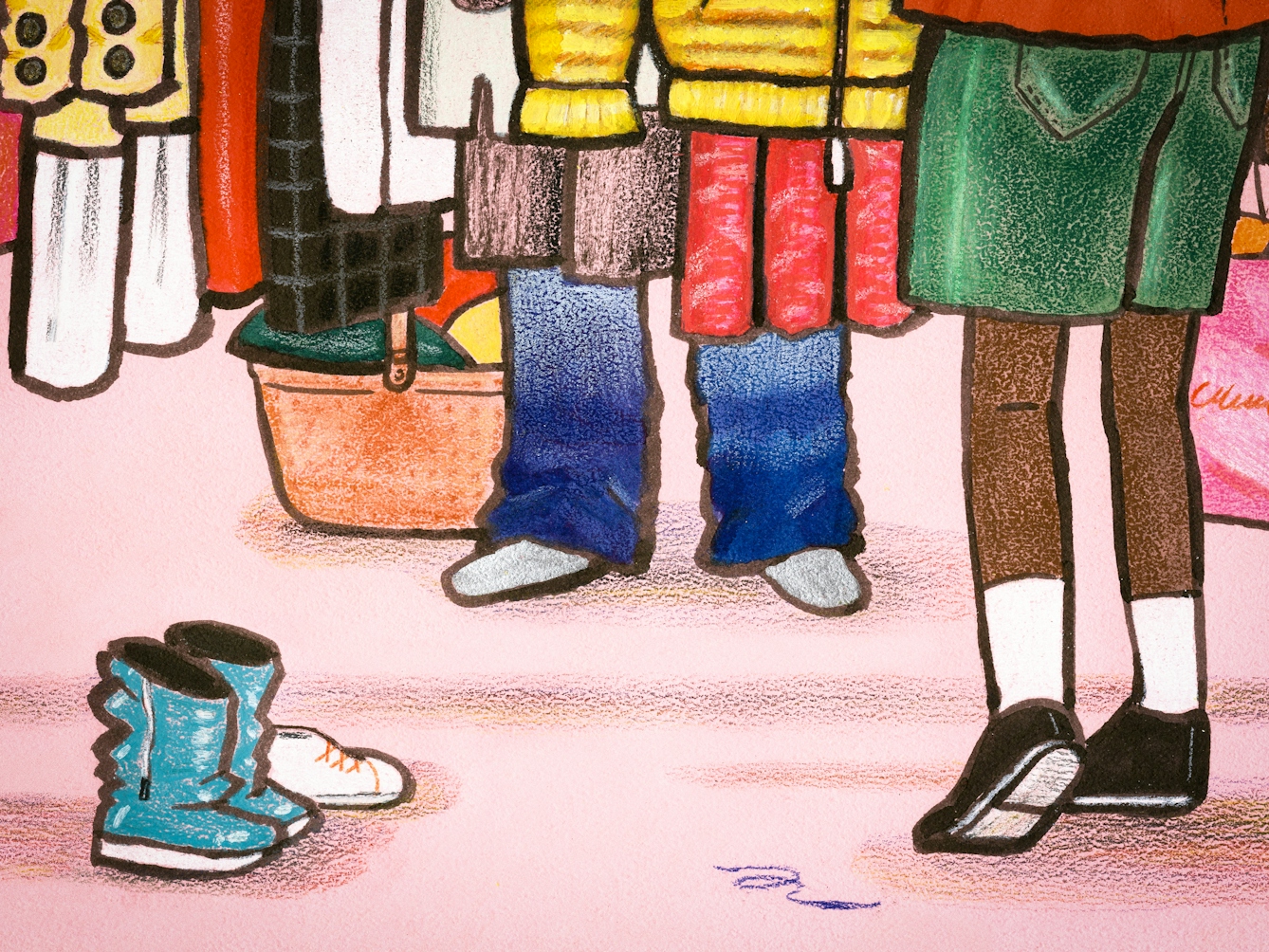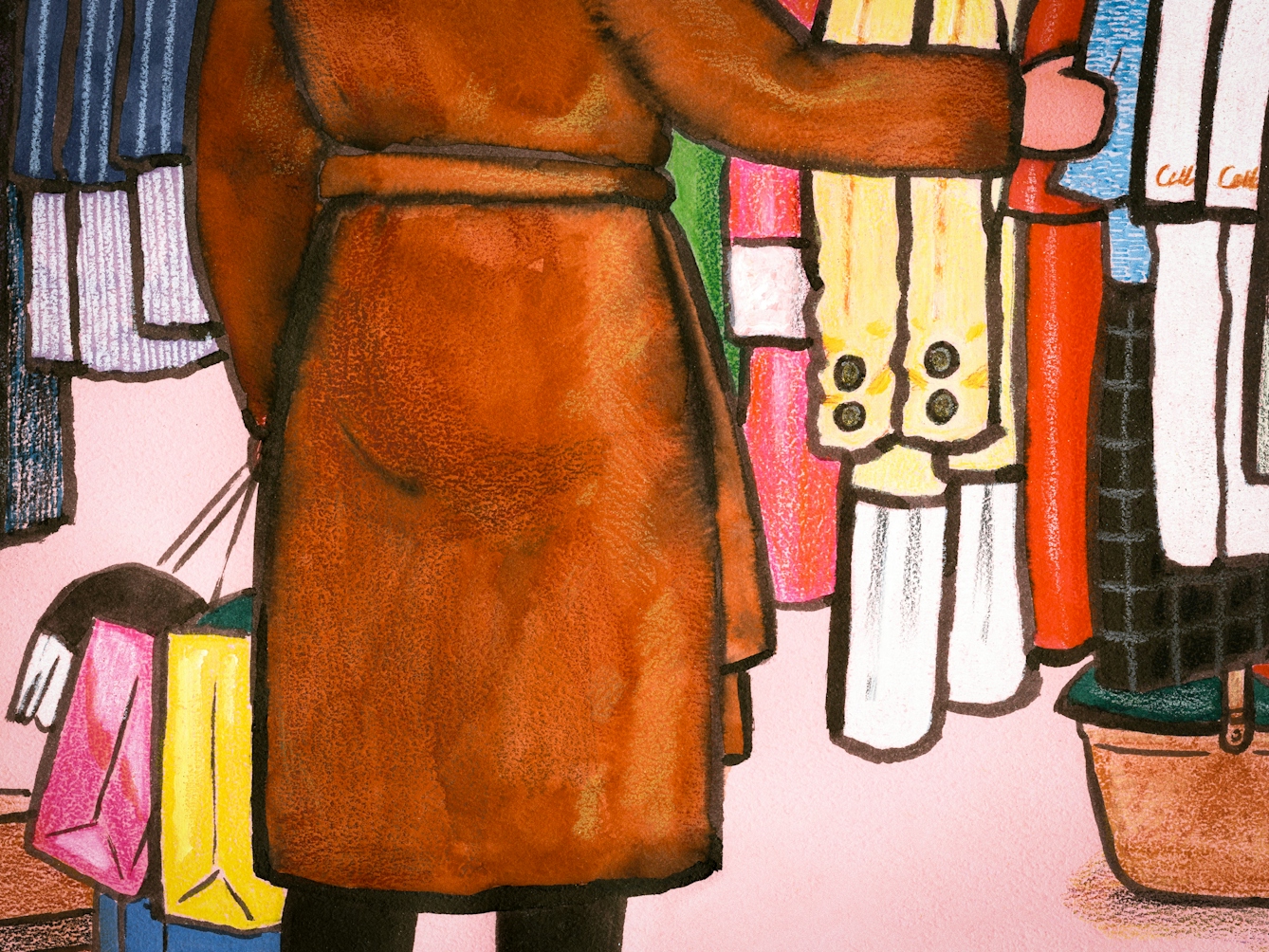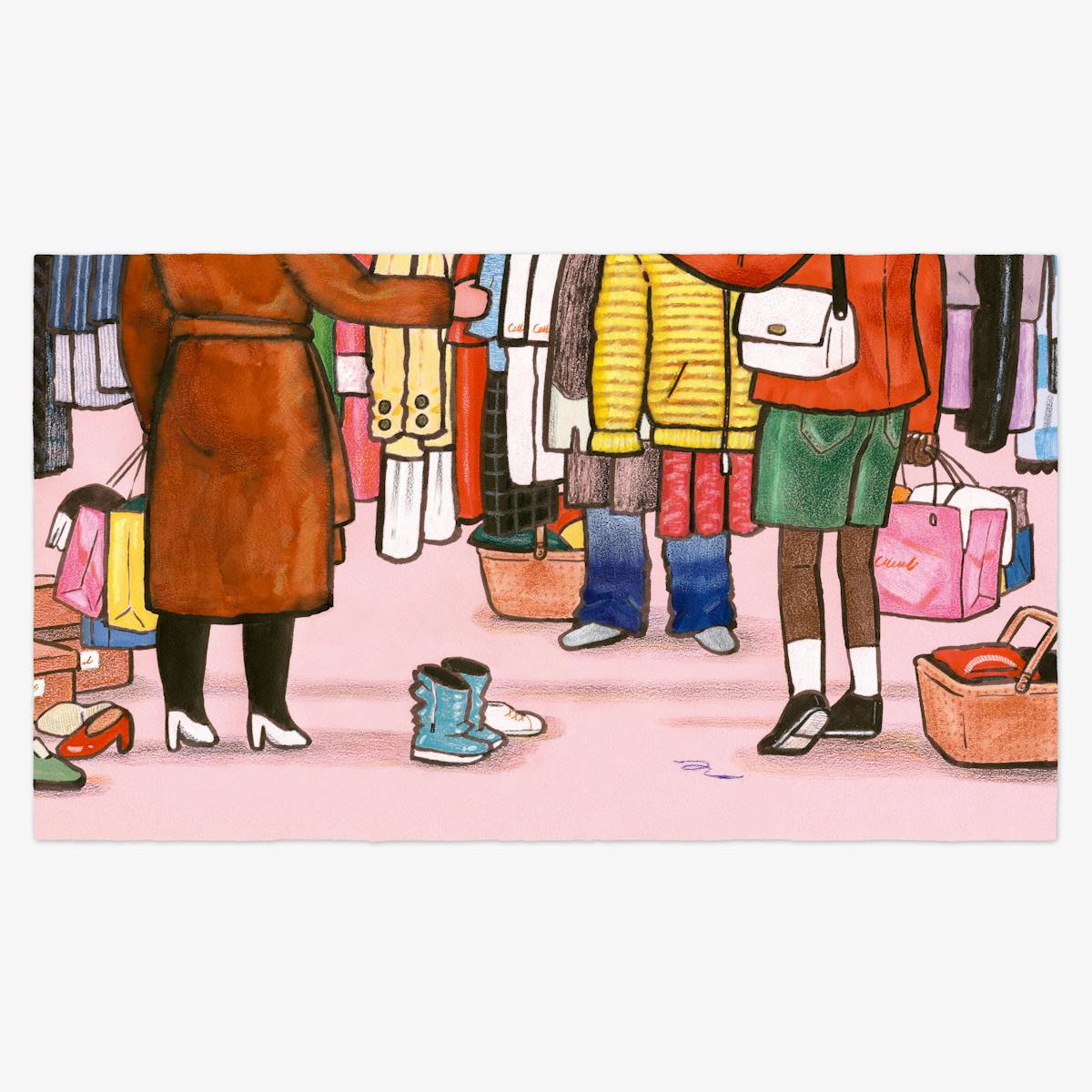In the Global North, the devastating social and environmental impacts of fast fashion are largely ignored. Aja Barber reflects on her relationship with this all-pervading, tenacious industry, and considers the difficulties we encounter when we try to dismantle it.
Fast fashion is bad. According to Sustain Your Style, the fashion industry is the second-biggest polluting industry in the world, just after the oil industry. There is such little care for the humans doing the hardest labour that, in 2013, a shoddily constructed factory collapsed in Bangladesh, killing 1,134 innocent people.
By 2050 there will be more plastics in the ocean than fish, which includes the microfibres shed from our polyester garments. And yet we can’t seem to stop buying. In fact, the Wall Street Journal writes, consumers buy “five times more clothing now than they did in 1980”. How on earth did we get here?
I remember the first time I experienced fast fashion. It was on one of the trips overseas that I was lucky to take as a young person. I visited a store stuffed with clothes that were much cheaper than I had expected.
I grew up wearing a steady stream of hand-me-downs and department-store picks governed by my mother’s pious taste. As someone who always had a definite idea of my own style, getting dressed was a point of enormous stress as I tried to please both my mother’s sensibilities and her wallet.
As I entered that store, I finally felt free to express myself with the candy-coloured garments laid out before me. The moment presented so much possibility, yet so much disposability. Was it truly freedom?
Not once did I stop to ask myself how clothing was cheaper within these walls. How could this store possibly get their prices so low? What exactly did this new-found world represent beneath the rainbow-coloured reams of disposable apparel?
I was already too far gone thinking about how this new world offered me access to the things I wanted most. Social acceptance for my Black body in a very white world. The appearance of social mobility. Cool factor. I was hooked immediately. Gimme all the things and gimme them right now.

“Not once did I stop to ask myself how clothing was cheaper within these walls. What exactly did this new-found world represent beneath the rainbow-coloured reams of disposable apparel?”
Exploiting marginalised people
The fashion systems of production and exploitation we participate in – perhaps because it feels like it’s the only thing some of us can afford to do – are toxic. In my book ‘Consumed: The Need for Collective Change: Colonialism, Climate Change & Consumerism’, I broach the topic of the climate crisis and its connection to the fashion industry with a bit of a joke about whether the reader wants the bad news or the really bad news. It truly is all bad news.
Fast fashion, a symptom as well as a driver of the climate crisis, is killing the planet, the people who make the garments and, eventually, us. Entire oceans, such as the Aral Sea, are disappearing due to the demands of the surrounding cotton crops. Nature reserves like the Atacama Desert are being covered with the spoils of fast fashion’s legendary waste, as excess clothing from consumers in the Global North is imported and dumped in Chile.
According to Fashion Revolution, a global non-profit fashion activism movement, the fashion industry produces 150 billion garments a year. The human population is only 7.9 billion people, so that’s almost 14 times as many humans exist on our planet. Globally, 92 million tonnes of textile waste is created each year, and waste water from garment factories in China contribute to 70 per cent of the country’s water being polluted.
Fast fashion, a symptom as well as a driver of the climate crisis, is killing the planet, the people who make the garments and, eventually, us.
And the life of a garment worker isn’t awesome at all. According to Fashion Checker, in 2020 “93 per cent of brands surveyed aren’t paying garment workers a living wage”. In 2013–15, monthly minimum wages for garment workers in parts of Asia were around 51 euros in India, 54 euros in Bangladesh and 64 euros in Pakistan. Workplace abuse and unsafe environments within the fashion-production sector have also been widely documented.
And it doesn’t seem to be getting better. But it never was great. The fashion industry has always exploited the most marginalised. Take, for instance, the Triangle Shirtwaist Factory fire of 1911, which resulted in the death of 146 young, immigrant women in New York City.

“The fashion industry produces 150 billion garments a year. The human population is only 7.9 billion people, so that’s almost 14 times the number of humans that exist on our planet.”
Small steps to change
Everyday fashion doesn’t have to be this bad. My first visits to London, where fast fashion had taken over the high street in the early 2000s, saw higher price points and higher quality than you see today. It takes many years of devaluing raw materials and people for things to swing as low as they are now.
It’s as if millennials, my generation, fell asleep at the wheel. Some of us were raised to be quite conscientious kids, with phrases like “save the planet” becoming a regular part of our lexicon from elementary-school age. I’m sure our parents hoped our generation would solve all the problems they’d failed to solve themselves. I am working hard to make sure I don’t wish that on the generation that comes after my own.
We were much better educated than previous generations about the perils of greenhouse gases and sweatshop labour. Perhaps we became distracted by inventions like the internet or the foolhardy idea that “technology will save us all”. Or maybe we just got bogged down with all the worry, from the climate crisis to lack of employment.
Either way, we became enveloped in our own problems and lost track of the bigger picture, which includes looking out for those more vulnerable than ourselves.
Income inequality can distract us from the rainforest. Or the fact that maybe the clothing we buy to cheer ourselves up and take our minds off the planet being on fire might have come to us through nefarious actions. Exploitation is aiding the climate crisis we’re trying to avoid looking at.
It’s all too much sometimes: that’s why I break it down into little pieces. To think about all of it together is a toxic pill to swallow. But to think about small changes I can make is the first step.
You start changing your wardrobe. You begin to talk about it online. You find yourself first chatting to friends and then chatting to lawmakers. You take it step by step, piece by piece and little by little, and you start to feel better about it. Because you’re doing everything you can, one step at a time. And with every step you’re spitting some of that toxicity out.
This article was edited by Zainab Mahmood and Alice Skinner from It’s Freezing in LA! and is part of a series of articles about toxicity. It also appears in Issue #9 of It’s Freezing in LA! magazine.
About the contributors
Aja Barber
Aja Barber is a writer, personal stylist and style consultant living in south-east London. Her work focuses on sustainability, ethics, intersectional feminism, racism, and all the ways systems of power effect our buying habits.
Jiye Kim
Jiye Kim is an illustrator based in Seoul. Her work aims to celebrate our uniqueness, she enjoys drawing people from diverse perspectives and observing how they express themselves. She is also interested in storytelling and likes to create narrative-based artworks using traditional and digital techniques.


